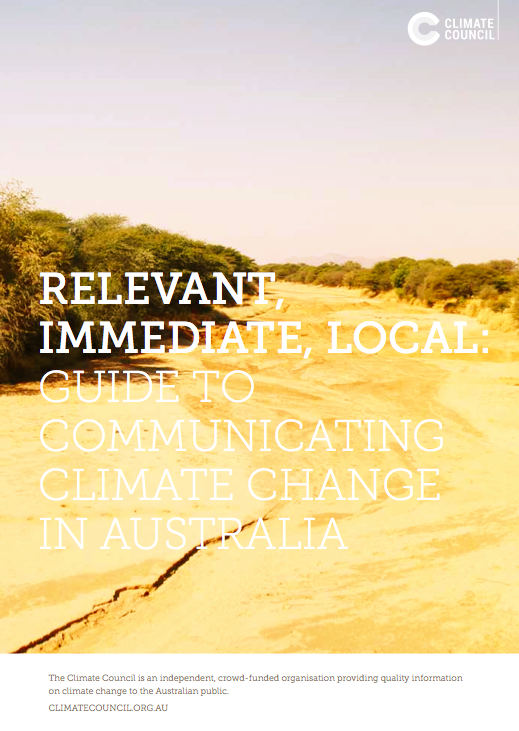
Over the last five years the climate change landscape has changed significantly. While the discussion used to focus on future consequences, we now have significant data about the immediate impacts of climate change on human health, property, infrastructure, agriculture and biodiversity today. It’s clear that extreme weather events are more frequent and severe; global action has accelerated with the global energy giants, China and the USA leading; and the price of renewable energy has dropped quickly enabling rapid increases in capacity in solar PV and wind power.
Despite these shifts climate change remains a communications challenge. For decades there has been a concerted campaign of misinformation that has confused the public. Many of the myths remain potent and must be combatted. Additionally, climate change has predominantly been a highly complex and abstract discussion of science, policy and the economy. Making climate change information relevant, interesting and engaging for a general audience is an on-going challenge for communicators.
Those communicating in the media and to the public have the power to shape the national narrative about climate change. Climate change is happening now, without deep emission cuts its impacts on Australia could be devastating, and we’re in a great position to take advantage of clean energy solutions.
After years of toxic public discussion focused on the carbon tax, the conversation on climate change is shifting. Recent polling consistently shows that public concern is increasing, particularly after two record-breaking summers and an international narrative of . This guide is to assist those communicating on climate change to do so accurately and effectively. We have analysed psychological and public opinion research from Australia and abroad to provide a simple framework to communicate; we have also included up to date facts on climate science, impacts, and solutions here in Australia.